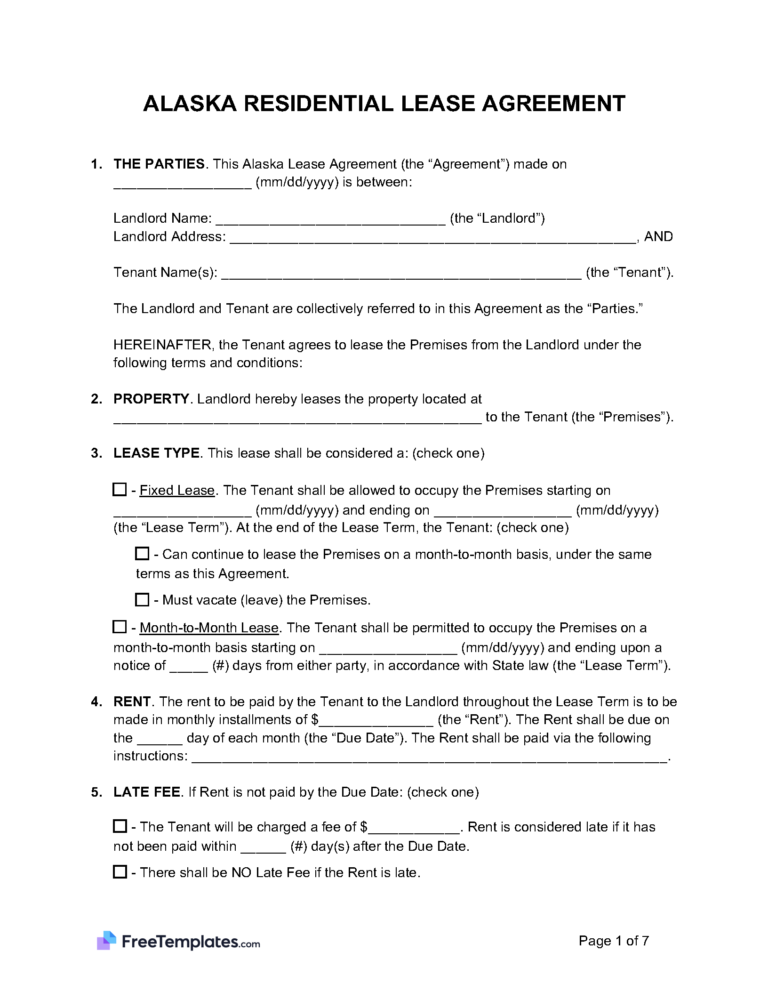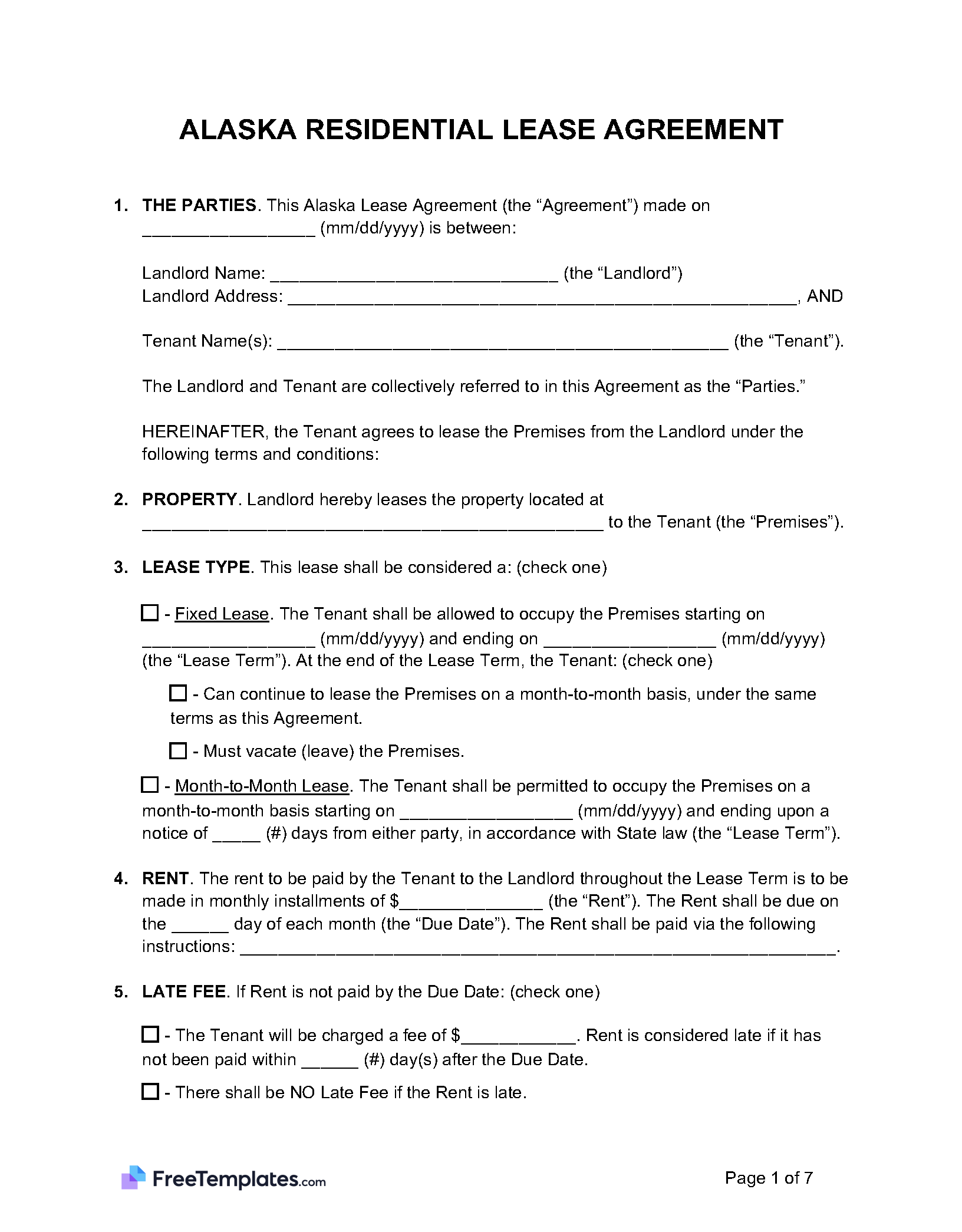By Type (6)
| Standard Lease Agreement – Fixed-term arrangement with a start and end date. |
| Commercial Lease Agreement – For a business-related use, commonly for office, retail, or industrial property. |
| Month-to-Month Lease Agreement – A lease that can be modified or terminated within 30 days’ notice. |
| Rent-to-Own Agreement – Allows the tenant an option to purchase while renting the property. |
| Roommate Agreement – When making rules for multiple individuals sharing a common residence. |
| Sublease Agreement – For renting residential space to a subtenant by the original tenant. |
Disclosures (3)
7+ Day Absence – It must be mentioned in the lease if the tenant is to leave the property for a period of more than 7 days that the landlord will be notified. The landlord must be informed as soon as the tenant is aware of their absence.[1]
Lead-Based Paint Disclosure – Required for the landlord to give to a tenant if a property was built prior to January 1, 1978.[2]
Landlord’s Identification – The landlord, or someone authorized to manage the premises, must be disclosed to the tenant in the lease. Should this information change, the landlord must update the tenant.[3]
Security Deposit
Maximum Amount – The landlord is allowed to collect up to 2 months’ rent from the tenant except if the monthly rent amount is more than $2,000. If more, there is no maximum.[4]
Holding the Security Deposit – If the landlord collects a security deposit, it must be held in a separate account designated for the holding of the tenant’s deposits. The account can hold other tenants’ deposits and pre-paid rent amounts.[5]
Collecting Interest – There is no requirement for the landlord to collect interest on the security deposit for the benefit of the tenant. If a real estate broker is holding the security deposit, there is a requirement for the trust account holding the money to pay any interest earned to the tenant.[6]
Returning to Tenant – The landlord has 14 days to return the security deposit if the tenant leaves on time or there are no deductions. If there are deductions to the security deposit, the landlord has 30 days to return it.[7]
Itemized List (for deductions) – If the landlord has deducted any amount from the tenant’s security deposit, it must be mentioned on a separate itemized list.[8]
Landlord Access
General Access – The landlord must give 24-hour notice to the tenant prior to entering the tenant’s property during reasonable hours and with their consent.[9] Any request for entry by the landlord cannot be unreasonably withheld by the tenant for repairs, improvements, or related reasons.[10]
Emergency Access – For emergency use only, the landlord can enter the tenant’s property.[11]
Paying Rent
Grace Period – No rent grace period. The rent is payable at the time and place mentioned in the lease (commonly the 1st day of the month).[12]
Maximum Late Fee – There is no maximum fee mentioned in the statutes. However, the landlord is recommended to not charge more than the usury rate of 10.5% interest per annum (or 5% over the legal rate).[13]
Returned Checks (NSF) – The fee can be up $10 or triple the amount of the returned check, whichever is greater while not exceeding $1,000.[14]
Reasons for Eviction (5)
Illegal Activity – If the tenant participates in illegal activities on the premises, the landlord can issue a 5-day notice to quit, which requires them to move out of the property.[15]
Intentional Damage to the Property – If the tenant has engaged in property damage deemed intentional, the landlord can issue a 24-hour notice to quit that requests the tenant move out immediately.[16]
Non-Compliance – For any lease violation unrelated to rent, the tenant can issue a 7-day notice to quit. This allows the tenant to ‘cure’ the issue within the 7-day period or vacate the property.[17]
Non-Payment of Rent – If rent is not paid on the day mentioned in the lease, a 7-day notice to quit can be issued to the tenant, requiring them to pay the back-rent amount or vacate the premises.[18]
Unpaid Utilities – If the tenant has not paid utility bills to the property, the landlord can issue a 3-day notice to pay any unpaid balances. If the tenant does not pay their outstanding amounts, they must vacate within 5 days of the notice being issued.[19]
Sources
- AS 34.03.150
- 24 CFR 35.92
- AS 34.03.080
- AS 34.03.070(a)
- AS 34.03.070(c)
- 12 AAC 64.210
- AS 34.03.070(g)
- AS 34.03.070(g)
- AS 34.03.140(c)
- AS 34.03.140(a)
- AS 34.03.140(b)
- AS 34.03.020(c)
- AS 45.45.010
- AS 09.68.110(a)
- AS 09.45.090(a)(2)(G)
- AS 34.03.220(a)(1)
- AS 34.03.220(a)(2)
- AS 34.03.220(b)
- AS 34.03.220(e)

